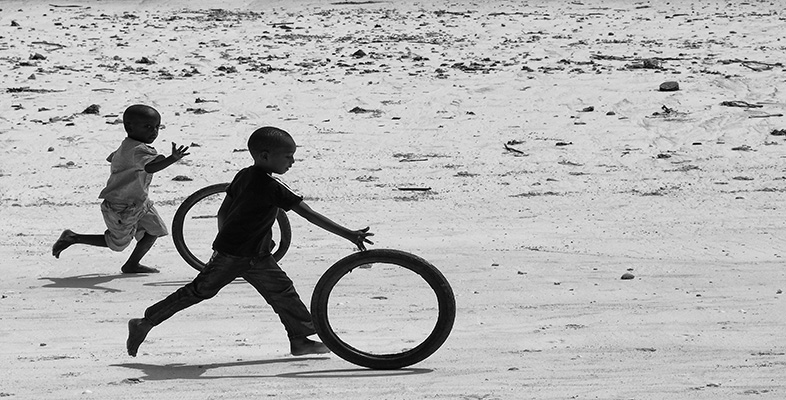1 Play, learning and the brain
Our brain-building starts in utero and we are all born with billions of neurons — specialised brain cells designed to transmit information to other nerve cells around the body. Rapid brain growth means that by age two our brains are approximately 80% of adult weight, reaching 90% of adult size by age five.
‘Brain-based learning’ (BBL) is receiving increasing attention in the popular and professional fields. But what exactly is it? Before we explore the idea further it is important to understand the brain as we currently know it. The diagram of the brain (below) will remind you of some key ideas about its various areas and functions.
Our brain and the spinal cord together make up our central nervous system. The spinal cord goes from the brain down to the lower part of the back. It is responsible for taking messages to the brain from the rest of the body, and from the brain to the rest of the body.
When we look at the brain image we can see three main parts:
- the cerebrum
- the cerebellum
- the brainstem.
Each of these parts controls a number of important functions.
The cerebrum is the largest part of the brain and it is found at the front of the head. It controls our sense organs – touch, vision, hearing, temperature – and it initiates and co-ordinates movement. It also has a role in problem solving, reasoning, emotions and learning. All thoughts, memories, and imagination occur in this region. In this diagram the cerebrum has been displayed to show the lobes and their function.
Activity 1
Take a look at some of the ‘facts’ we know about the brain by taking part in this light-hearted quiz.
The very rapid growth of the brain during the first years of life raises some important questions about the quality of early experiences for children's overall development.
Before you move to the next section you may like to think about what is meant by the term ‘developed’, and whether the quotation from the Royal Foundation Centre for Early Childhood at the top of this page means that the brain can only develop a little more after the age of five.
